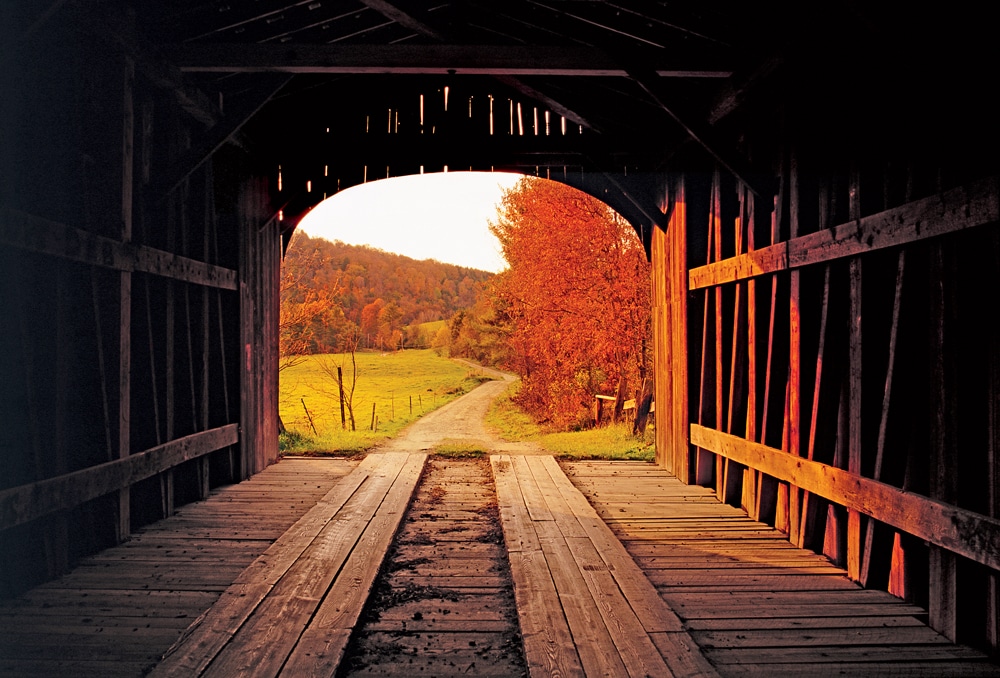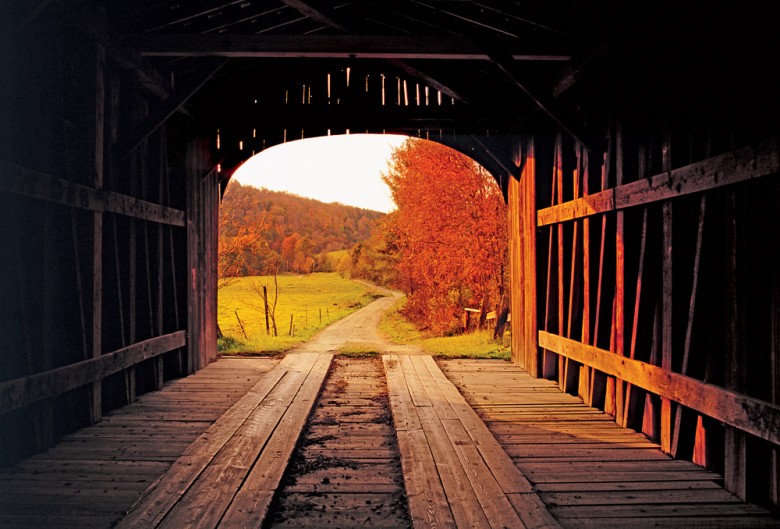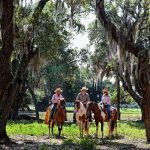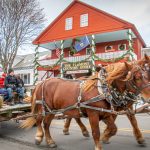A Beautiful Refuge | Covered Bridges
New England’s covered bridges speak to us of both heritage and safe haven.

Coffee By Design | Portland, Maine
Photo Credit : Katherine Keenan
Photo Credit : © 2016 Steven Edson
New Englanders are, above all, practical. Even if you arrive with fancy notions for buildings, the weather will swiftly veto the unfit roof and wall. That’s why we really have only one kind of building, old and new, big and small: the shed. From woodsheds to barns, from houses and meetinghouses to covered bridges, they’re all sheds. New England has never gotten much beyond the shed, and we’re the better for it. It’s the simple form that’s adaptable, that thrives from generation to generation. In fact, it’s what tourists respond to, though they certainly won’t say, “We’ve come to see the sheds.” But they love covered bridges, and the way that the houses lining the common seem like the little brothers of the bigger meetinghouse, or the way the connected sheds and barns trailing behind a house stand there like a third-grade class lined up for its photo.
Sheds are utilitarian. Sheds contain small things—wood and tools—and big: summers, winters, solitude, festivity. The smallest sheds can be liberating: a bob house on a frozen lake, a summer cabin. They can shelter dreams.
Sheds are flexible and fragile. They live in this paradox: They’re strong enough to bend. If they break, they can be fixed with common knowledge and common tools. A shed is a simple form, easily rebuilt. Sheds are temporary, and yet they last. A shed is the shortest line between need and shelter. It’s a trip from A to B. It’s often built of found mate-rials; it’s built with a distilled practicality.
Of all sheds, covered bridges are the stars; spanning the water, they’re beloved for the beautiful pictures they make. Devoted “bridgers,” as enthusiasts are known, talk about the “prancing hoofbeats” on the wooden boards, “the fragrance of the aging wood,” kids swimming under the bridge or fishing off the bridge, young swains stealing a kiss with their “best girls,” and the ghosts that might be seen in the terrifying dark on moonless nights. Bridgers keep the nostalgia mills turning.
Covered bridges weren’t built to star on calendars. They weren’t built to be pretty. They were built with roofs to protect the bridge’s support—the trusses you see on the side, scissoring by. At least twenty different truss designs, most of them patented, were used in the 19th century. Philadelphia built the country’s first covered bridge, in 1805, at the insistence of a local judge who said, correctly, that the bridge would last much longer if its trusswork were protected from the weather. This innovation was quickly adopted across the country with great success. Bridges that once had to be replaced frequently now could serve for a century—or more, in the case of several bridges. Covered bridges are rudely practical.
But that’s not why they have legions of protectors; about 850 covered bridges survive across the country, due in part to the vigilance of the bridgers. The strong appeal of covered bridges lies in the surprising feeling of shelter they arouse in people. Passing into the bridge’s shadows, a traveler is enclosed and suspended, and on many bridges, open to the water—looking through the trusses or windows, or down through the boards of the roadway. This sudden enclosure and suspension reawakens the senses.
Covered bridges are like treehouses in that way: You’re high up, you’re hidden, and you have a view. For a moment you’re hiding out. The English geographer Jay Appleton says that people are drawn to shelters that offer “prospect and refuge.” Evolving as hunter–gatherers, humans naturally sought out places where they could see without being seen. Passing through a covered bridge offers a quick taste of our old affinities. They’re small moments of reunion with our younger selves. The bridgers’ stories are tales of refuge.
Adapted from Sheds, by Howard Mansfield, with photographs by Joanna Eldredge Morrissey (Bauhan Publishing, June 2016). More images at: NewEngland.com/CoveredBridges







